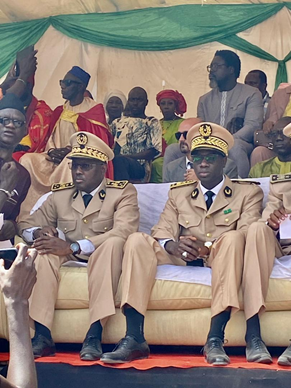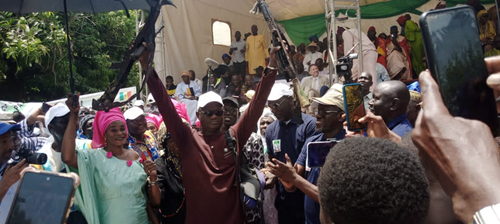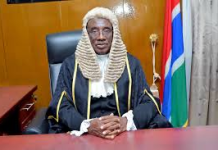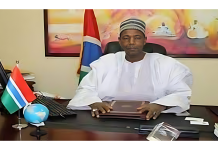By Amadou Jallow
Over 1000 men of the Movement of Democratic Forces of Casamance (MFDC) faction of Diakaye have surrendered their arms at the signing of a peace deal with the government of Senegal.
The two parties signed a peace deal on Saturday, May 13 in the village of Djignaky, Deparment of Bignona in the interior of Casamance, bringing hope to some that a rebellion that enters its 41st year is now coming to an end. The Diakaye faction is one of several armed groups in Casamance.
The signing of the peace deal was attended by thousands of people, including the envoy of the President of Senegal, Macky Sall, Mayors of Ziguinchor; Bindiona and Douloulou, Commander of the Diakaye faction, Fatoma Coly, and the international community. People sang songs of freedom and unity as authorities signed the peace agreement to end the decades-long killings and insurgency in the agriculture-rich region.

In the past three years, Ziguinchor-based civil society organisations on peace building in the Senegambia region, COSPAC, have been mediating the peace deal with the government and this armed faction which led to the Saturday peace agreement.
Two weeks ago, the organisation’s coordinator addressed peace advocates from Senegal, Gambia and Guinea Bissau at a forest and peace festival in the village of Kujubeh that was organised by Young People without Borders, a youth-led community-based organisation in Siffoe and COSPAC, where he said the peace deal will be a step in the realisation of their mediation efforts.
The rebellion in Casamance commenced in 1982, leading to the birth of several civil society organisations who continue to search for peaceful solutions to the conflict through engagements and organisation of peace talks both in The Gambia and Senegal. Since the commencement of the insurgency, thousands of people, including civilians have been killed and the disappearance of dozens of others. The armed groups in the region claim that they are been unfairly treated by the Senegalese government who disregard the region in term of development and other opportunities.
The Saturday peace deal also witnessed several cultural displays by the different tribes in Casamance, praying for the return of lasting peace in the region that will first of all allow the indigenes to reap the fertility of the land with its rich bearing in agricultural production.

The region of Casamance used to be the food basket of Senegal with its potential and fertile land for agricultural production and rich sea food. The region is also blessed with flourishing forest trees and cashew production which account for high percentage of earning of the people.
In the peace deal, both parties agreed to look inward to end the decades of suffering of people and to join forces in the restoration of the lost glories of the region in the interest of peace. The deal also contains conditions including provision of birth certificates to people who could not have access due to instability, peaceful return of all refugees that flee their homes due to the insurgencies, bringing of development projects in the Casamance region and the reintegration of combatants into meaningful engagements.
Last year, peace advocates in search for solutions for a lasting peace in the Senegambia region, particularly in in Casamance gathered in Siffoe to strengthen discussions on peace where they observed that only peaceful negotiations can help establish peace in the region. During that synergy, participants discussed how to take a united front towards sustaining peace in the region and beyond. The negotiations further engaged authorities in both Gambia and Senegal to discourage the unnecessary checkpoints and encourage free movement of people.

Some road construction works have already commenced in some parts of communities in Casamance as part of the conditions of the deal. According to sources, some families have already started to return home, mainly refugees who ran into the neighboring Gambia in search of refuge due to insurgencies.
Last year, several fighting erupted between the Senegalese military force and one of the rebel factions in the region led by Salif Sadio, leading to the killing and capture of some soldiers. The military later launched an offensive on the rebels and since then, Salif Sadio had not been heard with people suspecting that he may have been killed during the offensive.
Senegal army reported last year that it had captured several posts and camps around Badème and along the border between the towns of Bagame and Bouniak. The offensive left two military personnel wounded, with one of them stepping on a land mine and the other shot.





















